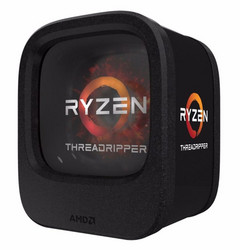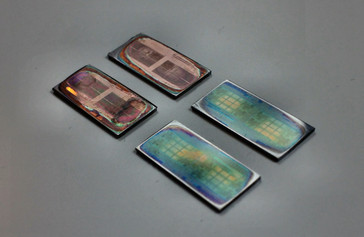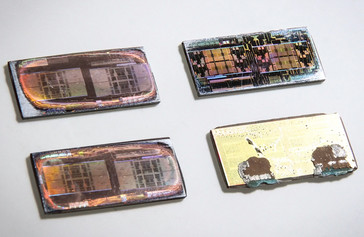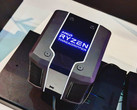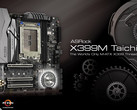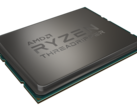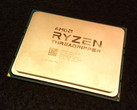Well-known overclocker and developer of delidding kits, de8auer, has delidded a retail AMD Threadripper 1950X to allow inspection of the silicon dies. This process was prompted by an earlier one of his videos where he removed the heat spreader from an engineering sample revealing four dies rather than two. After the first video, AMD had said that only two of the dies are active and two are “dummy dies,” something which de8auer disputes citing unnecessary silicon waste.
Once the heat spreader was removed and the dies were exposed, he used an interesting method of removing them from the CPU package to expose the right side for sanding (see video). Once the silicon was exposed it was easy to see the four dies all appeared to contain printed silicon. De8auer says “As expected we have four dies with eight cores on each die, so there is no such thing as dummy dies [on Threadripper] … why would you solder an empty silicon die onto a PCB, that [doesn’t] really make any sense” he continued “so here we have the proof, we have a 32 core CPU in the 1950X.”
There has been speculation around the web about whether these were meant to be EPYC server processors, but either two damaged dies were switched off, or two functioning dies were sitting idle on the CPU waiting to be activated in a new high-end version if AMD deemed it necessary.
In the time since the video was posted, AMD's senior product manager, James Prior, tweeted from his personal account to say “Threadripper is not a [sic] EPYC processor. Different substrate, different dies. 2 dies work, other 2 have no path to operation. Basically rocks.” Prior points out that the decision to refer to the additional silicon as “dummy dies” was related to the fact that there was no way to enable them. Therefore, they weren’t inactive they were non-functional/dead.
So there you have it. Threadripper does have four dies, all four slabs of silicon are printed and contain cores, two pieces are functional, and two are non-functional but are placed on the CPU package to help spread the heatsink clamping force over a wider area. For anyone interested in the process that was needed to reveal the internal silicon the original video by de8auer really is worth a watch.
I grew up in a family surrounded by technology, starting with my father loading up games for me on a Commodore 64, and later on a 486. In the late 90's and early 00's I started learning how to tinker with Windows, while also playing around with Linux distributions, both of which gave me an interest for learning how to make software do what you want it to do, and modifying settings that aren't normally user accessible. After this I started building my own computers, and tearing laptops apart, which gave me an insight into hardware and how it works in a complete system. Now keeping up with the latest in hardware and software news is a passion of mine.
> Expert Reviews and News on Laptops, Smartphones and Tech Innovations > News > News Archive > Newsarchive 2017 09 > The 16 extra cores found on Threadripper are "basically rocks"
Craig Ward, 2017-09-18 (Update: 2024-08-15)




